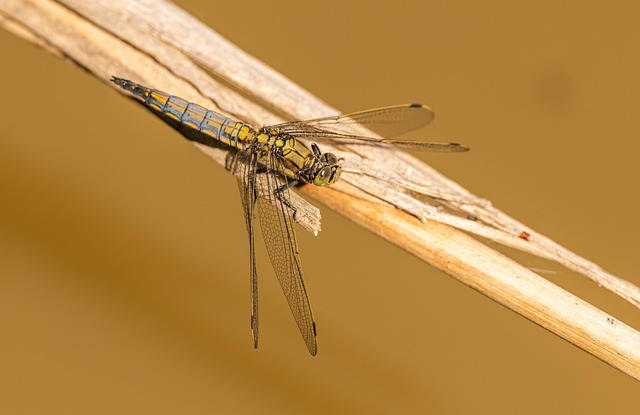Understanding how flies are attracted to kitchens – through open doors/windows, food debris, and moisture – is crucial for implementing effective, eco-friendly fly solutions. This includes blocking entry points, using natural repellents like citronella, peppermint, or lavender oils, introducing beneficial insects, deploying UV light or natural bait traps, and maintaining robust sanitation practices. By combining these organic methods, kitchens can achieve a comprehensive, green approach to fly control, minimizing chemical exposure while maintaining hygiene and safety during food preparation.
Keeping your kitchen free from flies is essential for maintaining a hygienic food preparation environment. This article offers tailored strategies to combat these pesky intruders, focusing on eco-friendly fly control methods specifically designed for kitchens and food areas. We’ll explore how to identify fly entry points and habitats, implement effective sanitation practices, and choose the right traps and repellents. Discover sustainable solutions to ensure a peaceful, fly-free culinary space.
Understanding Fly Behavior in Kitchens: Identifying Common Entry Points and Habitats
Understanding Fly Behavior in Kitchens: Identifying Common Entry Points and Habitats
Flies are relentless invaders, constantly seeking out food sources and suitable habitats. In kitchens and food prep areas, they find an abundant supply of both, making these spaces their prime real estate. To implement effective eco-friendly fly solutions, it’s crucial to understand where they enter and what draws them in. Common entry points include open doors, windows, or vents, especially during peak meal preparation times. These insects are attracted to ripened fruits, vegetable debris, spilled food, and even the moisture left behind by cooking activities.
Their preferred habitats often involve dark, secluded corners, under appliances, behind counters, and within crevices where food residue accumulates. By identifying these entry points and habitats, you can start blocking off access and implementing strategies that disrupt their behavior without resorting to harsh chemicals. This proactive approach not only keeps your kitchen cleaner but also promotes a healthier environment for both you and your family.
Eco-Friendly Fly Control Methods for Food Preparation Areas
In food preparation areas, maintaining hygiene and sanitation is paramount, which makes dealing with flies a critical task. The good news is that there are several eco-friendly fly control methods available that can be highly effective while minimizing environmental impact. Natural repellents like essential oils—citronella, peppermint, and lavender—can be used to deter flies naturally. These organic substances not only keep flies at bay but also add a pleasant aroma to the kitchen. Additionally, introducing beneficial insects, such as ladybugs and lacewings, can help control fly populations sustainably; these predators feed on fly larvae, reducing their overall number.
Another powerful eco-friendly solution is using fly traps that employ UV light or natural baits. These traps are designed to attract and capture flies without relying on harmful chemicals. Moreover, proper sanitation practices, including regular cleaning and sealing food waste properly, can significantly reduce fly breeding grounds. Combining these organic methods creates a comprehensive, green approach to fly removal, ensuring a safe and healthy environment for food preparation.
Implementing Effective Sanitation Practices to Deter Flies
Implementing robust sanitation practices is a fundamental step in deterring flies from kitchens and food preparation areas. Flies are attracted to organic matter, so maintaining a clean environment is crucial. Regularly cleaning surfaces, floors, and drains can eliminate attractants. Eco-friendly fly solutions include using natural repellents like lemon juice or essential oils, which not only keep flies at bay but also ensure a safer, healthier space without harmful chemicals.
Proper waste management is another critical aspect. Ensuring all food waste is securely disposed of and that garbage bins are tightly covered can significantly reduce fly populations. Additionally, fixing any leaks or standing water immediately, as these serve as breeding grounds, will make your kitchen less appealing to flies.
Choosing the Right Fly Traps and Repellents for Targeted Removal
When it comes to tailored fly removal in kitchens and food prep areas, selecting the right tools is key. Eco-friendly fly solutions offer a safe and effective approach, catering specifically to these sensitive environments. Opt for traps that lure flies with non-toxic bait, such as natural pheromones or organic fragrances, which are highly attractive to the insect without harming them or leaving behind harmful residues.
Repellents should also be chosen wisely, focusing on natural, plant-based options like citronella, lavender, or peppermint oils. These can be diffused or applied topically around the kitchen to create a barrier against flies, repelling them from the area without causing any harm to humans or pets. By combining targeted fly traps and eco-conscious repellents, you create a comprehensive strategy for fly removal that keeps your kitchen both clean and safe.
In implementing tailored fly removal strategies for kitchens and food preparation areas, a combination of understanding fly behavior, adopting eco-friendly control methods, enhancing sanitation practices, and selecting the right traps and repellents is key. By identifying common entry points and habitats, and leveraging natural deterrents, businesses can effectively manage fly populations while maintaining a safe and hygienic environment. These strategies not only ensure food safety but also promote an environmentally conscious approach to pest management, contributing to a healthier and more sustainable workspace.
